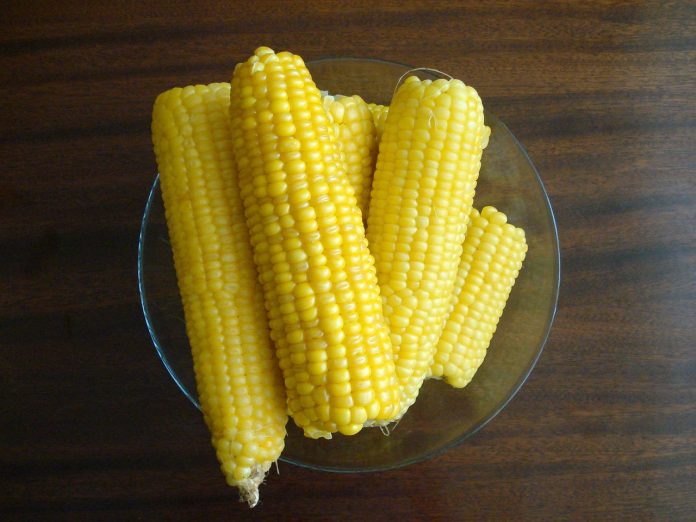Expect lines at farmers markets and produce stands for the next month or so. Fresh sweet corn arrives every day. And there is no finer addition to the dinner table or backyard barbecue than a pot of freshly cooked and salted sweet corn slathered in butter. My mouth waters just writing about it.
Getting truly fresh sweet corn, however, can be easier said than done. Corn that sits too long loses its sweetness.
Grocery store corn is often several days removed from the field. Even at roadside stands we must take vendors at their word that the corn was picked “early this morning.” And the “fresh” corn on the cob served on restaurant buffet lines makes a mockery of the word “fresh.”
Local stands and farmers’ markets are usually the best places to buy fresh sweet corn.
It’s a grass
But if you’ve managed to ward off hungry raccoons and deer to grow your own, nothing beats husking freshly picked corn and dropping it directly into a pot of boiling water.
Unhusked corn can also be roasted on a bed of coals or on a gas grill in just a few minutes. Or pop a few cobs in the microwave for 2 to 3 minutes. A little butter and a dash of salt turns this simple grass into gourmet fare.
That’s right
Corn is botanically classified as the grass Zea mays. Each plant is monoecious; that is, separate male and female flowers are found on each cob.
The “tassels” at the top of the mature plant are the pollen-producing male flowers. Pollen is plant sperm. The silk that emerges from the top of each ear of corn is a portion of the female flower.
When wind-borne pollen grains reach a strand of silk, they move down the silk via a pollen tube to the egg. Fertilization occurs, and a kernel of corn forms. An ear of corn bears 300 to 1,000 kernels, and each stalk usually bears one to three ears.
Prehistoric roots
I suspect most people who appreciate fresh corn on the cob have fond memories of eating it at summer family picnics. But corn has a long history.
Genetic studies trace corn’s roots back to prehistoric southern Mexico and a primitive grass known as teosinte. Cobs of this early corn ancestor were primitive by today’s standards, but native people saw its potential, cultivated it, and over several thousand years, domesticated it.
The earliest corn, or maize as it was known, dates back at least 9,000 years. There’s little doubt corn played a prominent role in the success of Mayan, Aztec and other early American cultures.
Slowly corn spread north and south throughout the Americas. Some Native American groups called maize one of the “three sisters,” beans and squash being the other two, which formed a highly nutritious staple diet.
Columbus carried seed back to Europe. Today, its various cultivars — sweet corn, field corn, popcorn, Indian corn — grow from sea level to elevations of 10,000 feet.
Gone global
Given sufficient moisture and a long enough growing season, 130 to 140 days, corn grows almost everywhere. Corn ranks as the world’s most important cereal crop.
Around the world, corn has been a staple for centuries. It is the main ingredient in traditional porridges of Latin America, Africa, and Asia, in tortillas and tamales of Latin America, and in grits of North America. And who can watch a movie without a bag of overpriced popcorn?
Industrially, corn is milled in either a dry or wet form to make various products we use every day. Dry milling yields cornmeal, cornflour and grits, which can then be used to make breakfast cereals, pancakes, cookie mixes and snack foods.
Wet milling yields corn sweeteners, corn oils, ethanol, and polymers used to make plastics. And it’s an important food for livestock everywhere it’s grown. No doubt about it, corn is the most “a-maizing” grass on the planet.
















